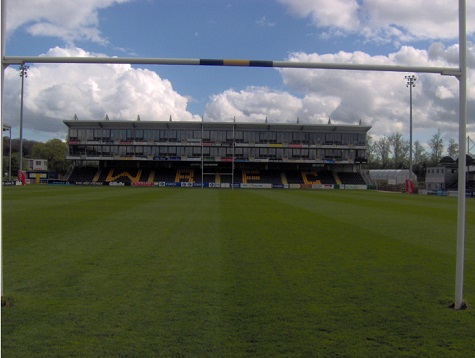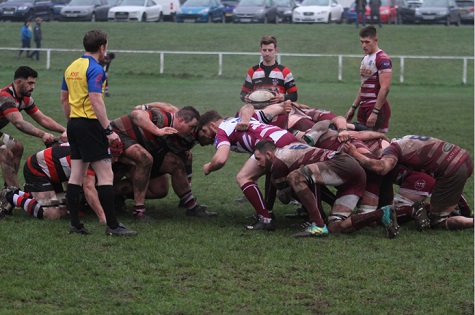Recently I read that Worcester Warriors will be renamed Sixways Rugby as ownership group Atlas revealed the club will not feature in next season’s Championship. This came to pass after the club failed to meet the Rugby Football Union’s deadline of February 14 to provide evidence, they had met relevant conditions to participate in the second-tier competition.
It seems the owners said they would instead be merging with fourth-tier Midlands side Stourbridge.
This decision will clearly upset many people. The sad fact of life is that the Worcester Warriors brand and the Worcester Warriors business is gone for ever. This leads me to wonder what many of the old Stourbridge players and members think of this development? And indeed, what will happen to the current Stourbridge club’s facilities?

Worcester Warriors
In my opinion it’s another nail in the coffin for the current state of rugby. As an ex-player myself, who played for Worcester RFC in 1979 and several other top Midlands clubs - including Moseley, Birmingham and Nuneaton of which all have had their own ups and downs since the formation of Competitive leagues in 1997 - it is tragic to hear about the many issues facing rugby clubs up and down the country.
Before 1997, rugby clubs organised their own fixture lists and historically clubs over many years built up their specific rivalries of teams they played each year. However once the new leagues started and the top two tiers turned professional, then these financial and logistic problems began.
We saw several clubs go to the wall, losing their status and having to start at a lower level to get back into the sport. Even today, I suspect many of the top teams are living above their means in terms of paying players wages and coupled with shear costs of running these clubs at the top level.
The pandemic has certainly not helped the sport. The long layoff reduced clubs’ incomes and over time many lost players who perhaps did not return to the game.
Clubs that back in the 1980s and early 1990s were fielding several sides, are no longer able to do so. They are now often lucky to be putting out two or three senior teams.

Woodrush RFC v Shrewsbury RFC
Youth team rugby is not what it was either, as there are more activities and pastimes offered, plus parents have other priorities, Also with the loss of u19 colts representation fixtures, most clubs have seen a dramatic loss of potential first team players moving into the seniors sides. This is coupled with the fact that most 18-21 year olds are now going to university and moving away from the area.
This lack of participation across UK teams is having a profound effect on many clubs who each week find it hard to put out regular squads.The game has certainly changed since I stopped playing in the mid-1990s aged 40. Back then most club players were totally committed to playing and training every week. Even when I took up coaching some local clubs, getting players to attend two training sessions a week was nigh-on impossible and we rarely put the same side out two weeks on the trot.
My old club, Woodrush RFC, for the first time since it was founded in 1966, recently failed to field a first team due to a combination of injuries, non-availability and the fact it was international week for the club.
This lack of player commitment is becoming more prevalent with many junior rugby sides struggling to field teams on a Saturday. Players today often do not want to travel far and not spend too much time at their clubs. Long gone are the days when players committed whole days and nights playing and socialising with their fellow club members.
Putting out fewer teams has a detrimental effect on the club’s income generation with reduced bar profits. Combine this with the recent increases in clubs’ running costs and it means that plenty of clubs are facing an uncertain future.
One of my former junior clubs has said they have lost several of their best players from their playing squad this year due to the fact that a club two leagues above them are paying players to play.

Newport RFC v Nuneaton RFC
I know of several clubs who are prepared to pay players, with some receiving payments of around £150 per game. So, if all fifteen players are paid, that equates to a weekly bill in excess of £2250. A considerable sum of money to find. Times that by 25 games and we’re talking a total of £56,250!
Factor in that many players are not prepared to pay subs and membership fees and it equates to far less money reaching the clubs’ bank accounts. Also, the cost of running clubs as gone up substantially in recent years.
How many clubs can afford to pay players and how do clubs who do not pay players cope with dwindling numbers of players willing to play for nothing?
It is certainly a difficult time for many grass roots rugby clubs. It’s a pattern that is repeating of course, in other grass roots sports, with both bowls and cricket seeing a drop in participation.
A number of Midlands clubs I know, are actually sharing player resources to ensure they get a game on a Saturday.
Perhaps times are changing, and clubs will have to find new ways to attract and retain players. Let’s hope that these wonderful community clubs can weather this storm and be there for the next generation of sporting stars.